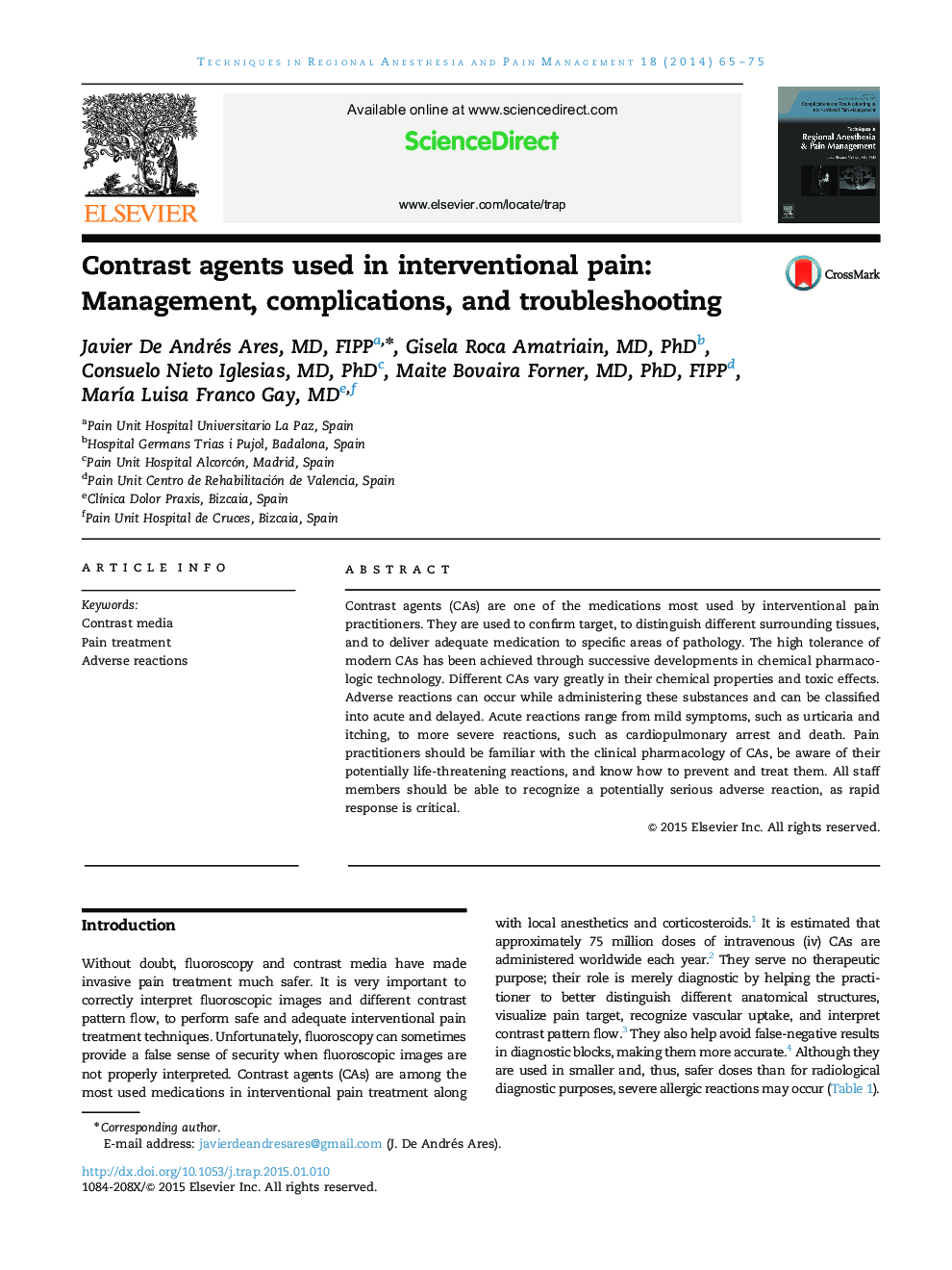| Article ID | Journal | Published Year | Pages | File Type |
|---|---|---|---|---|
| 2772223 | Techniques in Regional Anesthesia and Pain Management | 2014 | 11 Pages |
Contrast agents (CAs) are one of the medications most used by interventional pain practitioners. They are used to confirm target, to distinguish different surrounding tissues, and to deliver adequate medication to specific areas of pathology. The high tolerance of modern CAs has been achieved through successive developments in chemical pharmacologic technology. Different CAs vary greatly in their chemical properties and toxic effects. Adverse reactions can occur while administering these substances and can be classified into acute and delayed. Acute reactions range from mild symptoms, such as urticaria and itching, to more severe reactions, such as cardiopulmonary arrest and death. Pain practitioners should be familiar with the clinical pharmacology of CAs, be aware of their potentially life-threatening reactions, and know how to prevent and treat them. All staff members should be able to recognize a potentially serious adverse reaction, as rapid response is critical.
